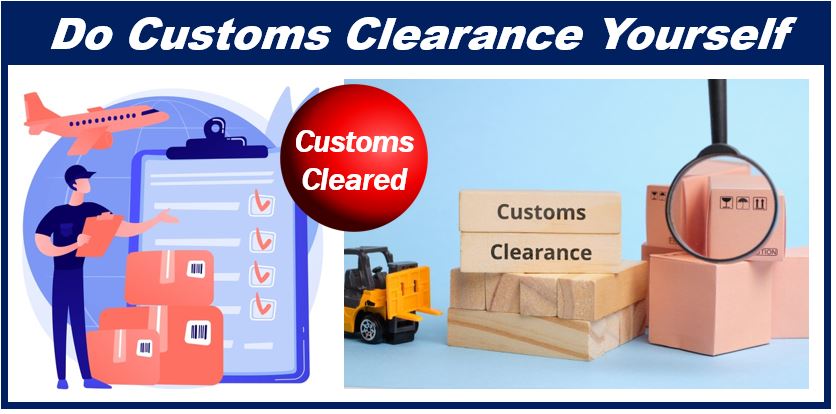Technology has changed every aspect of the way we live and do business. With the click of a button, we can accomplish almost any task without leaving home – from banking transactions to paying bills, shopping for food and clothes, to running an online eCommerce business. SMB’s especially are trying to do as much themselves as possible without using intermediaries – primarily to cut costs.

Image created by Market Business News.
Ours is the age of DIY solutions, and the DIY or “Maker” movement continues to gain momentum across all industries. eezyimport is a company that takes empowering U.S. importers seriously by encouraging them to harness the benefits of DIY. By taking matters into their own hands, DIY can help importers sail through customs clearance.
Why DIY?
When talking about DIY, the picture that springs to mind is someone fixing their roof, building kitchen cupboards, or painting a room. However, businesses, especially SMB’s, have increasingly opted for DIY software and other solutions to survive competition by cutting time and lowering operational costs.
This transformation applies across all industries from small eCommerce stores to hi-tech start-ups, industrial companies, the medical industry, and others using AI tools, CMS software, automated marketing, remote staff such as TeleICU, and more.
The Covid epidemic also gave the DIY movement impetus. Behind the economic benefits, DIY satisfies the psychological need for self-fulfillment, empowerment, trust, control, and transparency.
U.S. import industry
How do U.S. imports fit into the DIY scenario? Whether it’s an eCommerce store importing DIY jewelry kits, a tech company importing microchips, or other heavy construction equipment, all must traverse customs clearance. In other words, meet all U.S. Customs Border Protection (CBP) regulations. These stipulations include paying fees and duties and filing numerous and detailed forms accurately and timeously, significantly the ISF 10+2 and the Entry Summary.
The process can be daunting for new importers, and hiring a third party – or broker to do the leg work seems the only way to go. But, in fact, even experienced importers often prefer to outsource the bureaucratic headache.
The issue is ROI and begs the question: “If I take control and try to do all, or even part, of the import process myself, can I save outsourcing costs and navigate the import process simply and faster?” After all, and especially for online stores, express shipping and delivery is an essential part of the game. It can be the difference between make or break.
How does DIY importing work?
In the world of importing, there are two ways to become a self-filer – the first is via the CBP and the second is by using a DIY platform like eezyimport.
In the first scenario, the CBP can assign you ”import self-filer” status. As such, you take direct and full ownership of the customs clearance process. Namely, instead of hiring a licensed Customs Broker or Brokerage Firm to file on your behalf, you are accountable for direct communication with the CBP. You then file all required documentation for your imports to cross the border into circulation.
One requirement is obtaining a self-filer code for Entry Summary Filling (customs clearing). The code is a unique 3-digit ID number for the person allowed to self-file. The code is assigned by a Port Director at the main port of entry and issued by the CBP. To receive it, you must send the relevant Director a Letter of Intent. If you receive no response within 14 business days, resend the request.
The CBP also allocates you a client representative from the ABI (Automated Broker Interface). This agent is your go-to guy in the CBP. For example, agents can help answer questions, obtain in-bond (immediate transfer) numbers to move your merchandise from Port of Entry to Port of Unlading (vessel or flight) if required, and more. Thus, not only is self-filing encouraged but using the CBP’s digital services.
If you do not meet the CBP requirements to receive a filer code, you can still enjoy the benefits of DIY filing by using eezyimport’s eezyflow application that glides you through regulatory customs approval.
Online self-filing options
In any industry, searching for DIY solutions means sifting through endless companies advertising on Google. However, when it comes to authentic DIY importing in the U.S., even a year ago, your search would pretty much turn up empty.
In 2020, identifying this pain point among U.S. importers, eezyimport launched the first online DIY solution in customs clearance for SMB U.S. importers.
eezyimport’s mobile-first web platform enables importers to register with the CBP, file an ISF (10+2) form, request a filer code with the CBP, file the Entry Summary, and even purchase a Customs Bond during the filing process. The aim is to provide importers with a complete clearance process anytime, anywhere. The method also empowers them to save valuable time and money on every shipment. Moreover, it fulfills the psychological need for self-fulfillment, empowerment, trust, control, and transparency!
Want to learn more and start DIY? https://eezyimport.com.
Interesting related article: “What are Tariffs?“
